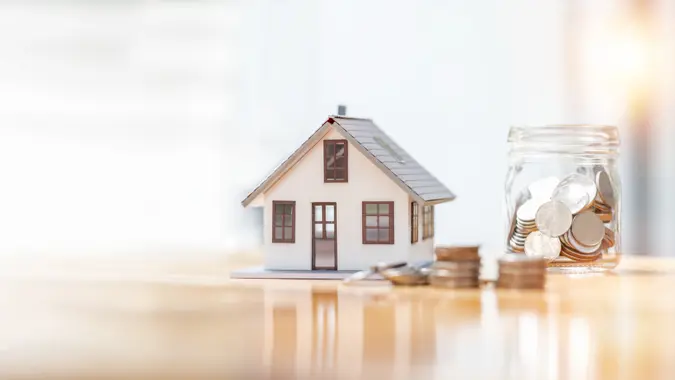Stimulus Update: COVID Relief on Mortgages Ends Soon — What Are Your Options?

Commitment to Our Readers
GOBankingRates' editorial team is committed to bringing you unbiased reviews and information. We use data-driven methodologies to evaluate financial products and services - our reviews and ratings are not influenced by advertisers. You can read more about our editorial guidelines and our products and services review methodology.

20 Years
Helping You Live Richer

Reviewed
by Experts

Trusted by
Millions of Readers
Mortgage relief programs designed to help financially strapped Americans weather the COVID-19 pandemic have either expired or will expire soon, putting hundreds of thousands of homeowners at risk of losing their homes. However, those worried about making their payments without federal help still have other options — and now is a good time to explore them.
The federal government, along with big banks and mortgage services, implemented emergency mortgage bailout programs during the early days of the pandemic. Under these programs, millions of homeowners were allowed to skip payments for as long as 18 months, CNBC reported.
More than half of the 7.7 million borrowers who took advantage of mortgage bailout programs are now current on their mortgages and making payments again, according to data from Black Knight, an analytics and software firm. Nearly one-quarter (23%) either sold their homes or refinanced their mortgages to lower their monthly payments.
But with those programs coming to an end, plenty of homeowners are in dire straits. Roughly 264,000 homeowners became delinquent on mortgages after their programs expired, CNBC noted, and 38,000 are in active foreclosure.
As GOBankingRates previously reported, a total of 45,517 U.S. properties had foreclosure filings during the third quarter — including default notices, scheduled auctions or bank repossessions — according to a report from ATTOM, a mortgage data company. That was up 34% from the previous quarter and 68% from the previous year.
But for many homeowners, other options exist that can let them keep their homes. A good first step is to contact your mortgage servicer to see about refinancing or modifying your loan. A traditional refinance can help you save money if you can qualify for a lower interest rate.
Similarly, a loan modification can lower your monthly payments by extending the loan term or reducing the interest rate. This is an especially good option if you have income, but can’t afford your pre-COVID mortgage payment amount.
“If you expect to have difficulty making a payment, reach out to your servicer immediately,” Michael Fratantoni, chief economist of the Mortgage Bankers Association, told CNBC. “The sooner you get in contact with your mortgage lender, the more options you will have.”
Another option is to look into the Treasury Department’s Homeowner Assistance Fund, which was part of the American Rescue Plan. The fund provides nearly $10 billion in relief for the country’s most vulnerable homeowners. Programs are implemented by individual states and territories, and might have different deadlines and rules depending on where you live. But in many cases, you’ll be able to catch up on missed payments.
If nothing else, you can always sell your home — and this is a good time to do so. U.S. home values are expected to rise nearly 14% between October 2021 and October 2022, according to the latest projections from Zillow Research. That’s on top of an expected 19.5% gain for all of 2021. RealtyTrac estimates that about 87% of borrowers in foreclosure now have positive equity on their homes.
More From GOBankingRates
- 5 Things Most Americans Don’t Know About Social Security
- 10 Reasons You Should Claim Social Security Early
- How To Add $500 to Your Wallet Just in Time for the Holidays
- How To Refinance a Mortgage
 Written by
Written by  Edited by
Edited by 

























